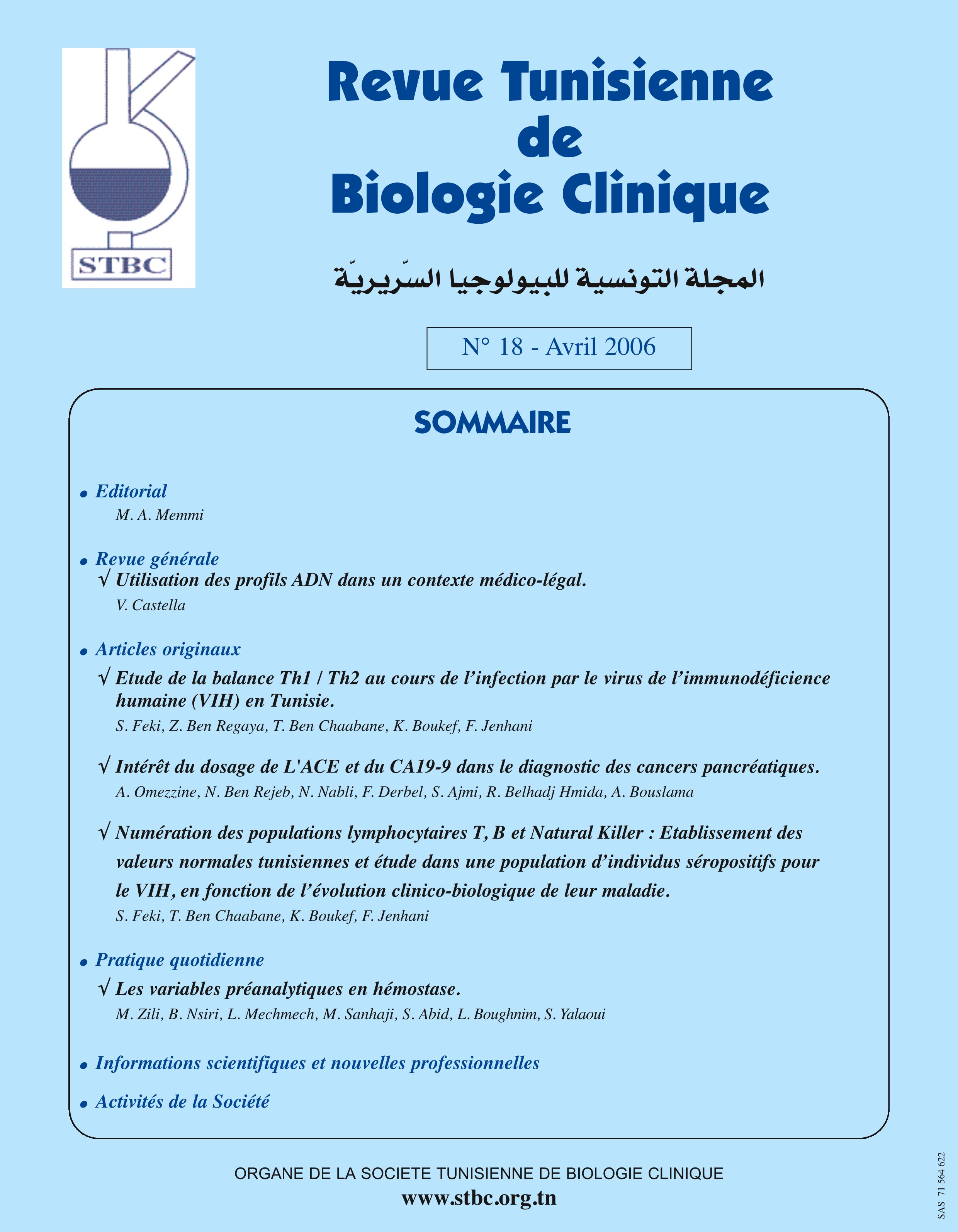Abstract
Pancreatic cancer carries a very poor prognosis due to often late diagnosis. Typically, diagnosis relies on ultrasound, histopathology, and serum tumor markers (CA19-9 and ACE). The aim of our study is to evaluate the contribution of these two markers compared to histopathological examination and ultrasound in diagnosing this cancer. We conducted a retrospective study on 110 patients with suspected pancreatic tumors. Only 73 of these patients underwent both histopathological examination, ultrasound, and measurement of tumor markers CA19-9 and ACE. We based our analysis on histopathology to divide our population into 3 groups: pancreatic tumor (n=46), chronic pancreatitis (n=14), and without pancreatic pathology (n=13). Among the studied population, ultrasound showed very good sensitivity (100%), negative predictive value (100%), and positive predictive value (64%) but low specificity (15%). ACE (at a threshold of 5ng/ml) demonstrated a sensitivity of 65%, specificity of 77%, positive predictive value of 80%, and negative predictive value of 60%, while CA19-9 (at a threshold of 22 IU/ml) showed better sensitivity (88%), positive predictive value (88%), and negative predictive value (72%) but slightly lower specificity (72%). The combination of these two tumor markers showed improved efficacy criteria. Unlike ACE, CA19-9 increases in chronic pancreatitis, hence the need to determine a discriminative CA19-9 threshold value between cancer and pancreatitis. The study of CA19-9 values distribution among different populations showed that at a threshold of 153 U/ml, the specificity of CA19-9 measurement in diagnosing pancreatic cancer is 100%. This threshold needs to be confirmed in a larger number of patients. In individuals with CA19-9 values above this threshold, the diagnosis of pancreatic cancer can be confirmed, avoiding more invasive examinations.

This work is licensed under a Creative Commons Attribution 4.0 International License.
Copyright (c) 2006 Revue Tunisienne de BIOLOGIE CLINIQUE

